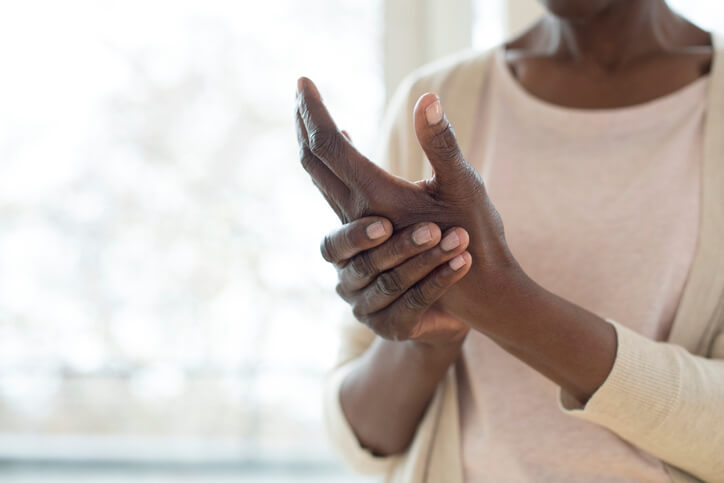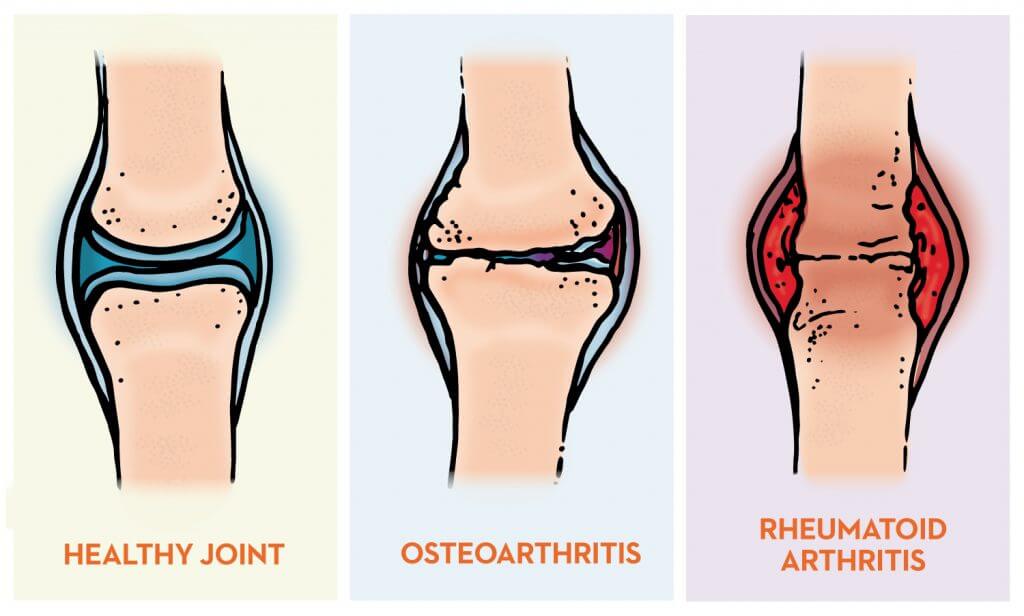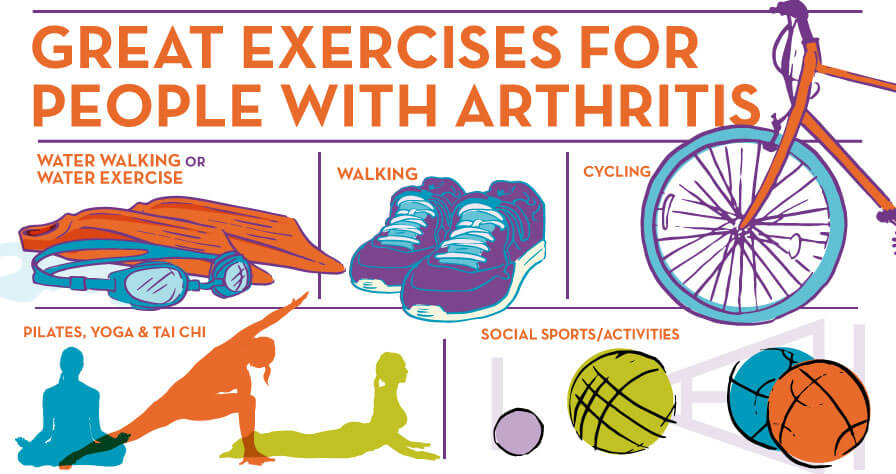What’s the Difference Between Osteoarthritis (OA) and Rheumatoid Arthritis (RA)?

Although they share some similarities, OA and RA are different types of arthritis that require different treatments. OA is the most common form of arthritis and is caused by wear and tear on joints. RA affects about one-tenth as many people as OA and is an autoimmune disease in which the body’s own immune system attacks the joints.
Similarities Between OA and RA
While the causes of both of these conditions are different, there are similarities in some of the symptoms, which include:
- Painful, stiff joints
- Limited range of motion
- Warmth or tenderness in the affected area
- Increased intensity of symptoms first thing in the morning
Differences Between OA and RA
Both OA and RA also have their own unique set of symptoms. RA is a systemic disease, which means that it can affect other parts of your body in addition to your joints, including the heart, lungs, and eyes. OA is a degenerative joint condition that’s limited solely to your joints.

Differences Between OA and RA Symptoms
OA symptoms:
- Pain. Pain and tenderness can be caused by bones rubbing together, inflammation in the joints, and pinched nerves caused by swelling and displacement of joint tissue.
- Stiffness. With OA, stiffness is usually worse in the morning or after periods of inactivity or rest. Your joints may feel achy, rigid, or hard to move.
- Reduced range of motion. According to the Centers for Disease
Control and Prevention, about 80% of people with OA have some difficulty with
range of motion and may need help with daily activities, such as:
- Dressing
- Bathing
- Putting on shoes
- Getting in and out of chairs
- Climbing stairs
- Swelling. Although more in common in RA, some people with OA can experience swelling. This is due to bone on bone contact and contributes to the pain associated with OA.
- Bone spurs. These are small bony projections that can be a response to inflammation in a joint. Bone spurs can sometimes be felt as hard little lumps around the joints affected by OA. While not painful in and of themselves, bone spurs can rub against nearby bones and nerves, which causes pain
- Fatigue. Because it often takes extra physical effort to perform the daily tasks of living, many people with OA experience fatigue.
- Noisy joints. Many people with OA can hear sounds in their joints when they move, including creaking, snapping, cracking, or grinding.
- Depression and/or anxiety. Chronic pain from OA can cause a great deal of stress, which puts many who suffer from OA at risk for depression and anxiety.
- Fever. Fever isn’t generally a symptom of OA, but the inflammation that can occur can cause a low-grade fever.
If you have OA, you can also develop lumps under the skin around the joints, but they’re different from rheumatoid nodules. People with OA can develop bone spurs or excess bone growth at the edges of affected joints.
RA symptoms:
Early RA tends to affect your smaller joints first, particularly the joints that attach your fingers to your hands and your toes to your feet. As it progresses, symptoms can also spread to the wrists, knees, ankles, elbows, hips and shoulders. About 40% of those who suffer from RA will also affect non-joint structures, including:
- Skin
- Eyes
- Lungs
- Heart
- Kidneys
- Salivary glands
- Nerve tissue
- Bone marrow
- Blood vessels
Early signs of RA can include low-grade fever, muscle aches, and excessive fatigue. People with advanced RA may notice hard lumps underneath the skin near the joints, called rheumatoid nodules, that can be tender.
Other Differences Between OA and RA
OA can affect any joint, but it tends to happen in joints that you’ve injured or use over and over, including:
- Knees
- Hips
- Back
- Neck
- Thumbs
- Big toes
RA can also affect joints all over your body but is especially common in the small joints of your hands and feet. RA can also affect your:
- Shoulders
- Elbows
- Knees
- Ankles
Unlike OA, RA usually doesn’t affect your back. RA is also a symmetrical disease, which means you’ll experience symptoms on both sides of your body.
Learn More About Osteoarthritis vs. Rheumatoid Arthritis from Baptist Health
If you want to learn more about the differences between osteoarthritis and rheumatoid arthritis, contact the Baptist Health Orthopedic team.



